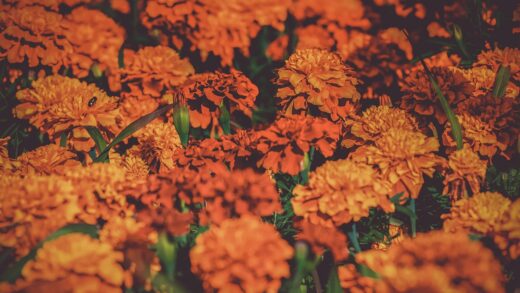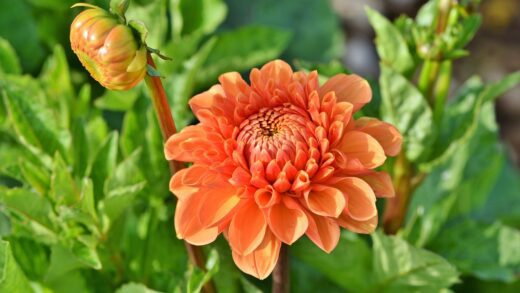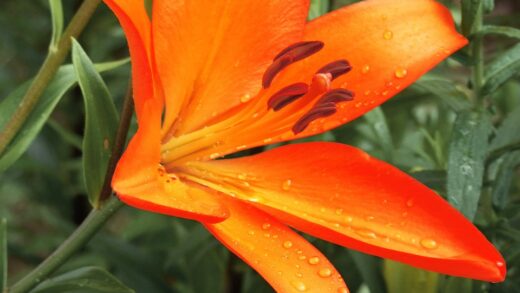Understanding the precise water requirements of the plush plant is arguably the most critical aspect of its cultivation, as improper irrigation is the leading cause of problems for this particular succulent. Native to arid environments where rainfall is infrequent but thorough, this plant has evolved sophisticated water-storage capabilities within its fleshy, velvety leaves. Therefore, our watering practices must aim to replicate these natural conditions, providing deep hydration followed by a significant period of drought. Mastering this balance is the key to preventing the dreaded root rot, the most common affliction of over-cared-for succulents, and ensuring the plant remains healthy, turgid, and vibrant.
The fundamental principle of watering a plush plant is the “soak and dry” method, a technique that aligns perfectly with its natural adaptations. This involves thoroughly saturating the entire root ball with water until it begins to drain freely from the bottom of the pot, ensuring that all the roots have access to moisture. After this deep soaking, it is absolutely essential to allow the soil to dry out completely before considering watering again. This dry period is not a form of neglect but a crucial phase that allows the roots to breathe and prevents the development of the fungal pathogens that cause root rot in persistently damp conditions.
Determining when the soil has dried out completely is a skill that develops with observation and practice, and it is far more reliable than adhering to a fixed watering schedule like “once a week.” The most effective way to check for dryness is to insert your finger or a wooden skewer about two inches into the soil; if it comes out clean and dry, with no soil particles clinging to it, then it is time to water. Another useful indicator is the weight of the pot; a pot with dry soil will feel significantly lighter than one with moist soil. Relying on these physical checks rather than a calendar will prevent you from watering when the plant does not need it.
The type of water used can also have an impact on the long-term health of your plush plant, although it is generally quite tolerant. Whenever possible, it is best to use rainwater or distilled water, as tap water can often contain high levels of minerals, such as chlorine and fluoride, which can accumulate in the soil over time and potentially harm the plant. If you must use tap water, it is a good practice to let it sit out overnight in an open container, which allows some of the chlorine to evaporate before you use it for watering your plants. This small step can contribute to a healthier root environment in the long run.
Watering frequency throughout the seasons
The water needs of the plush plant are not static; they fluctuate significantly with the changing seasons, and your irrigation frequency must be adjusted accordingly to match the plant’s growth cycle. During the spring and summer, which constitute the active growing season, the plant is photosynthesizing more, producing new leaves, and potentially flowering, all of which require more energy and water. Consequently, you will find yourself watering more frequently during this period, perhaps every one to two weeks, depending on factors like pot size, temperature, and light exposure. However, even during this active phase, the “soak and dry” principle remains paramount; always ensure the soil is completely dry before watering again.
More articles on this topic
As autumn approaches, the days grow shorter and the temperatures begin to cool, signaling to the plush plant that it is time to slow down its growth and prepare for winter dormancy. In response to these environmental cues, you should begin to gradually reduce the frequency of your watering. The plant’s metabolic processes are slowing, and its need for water is diminishing, so the soil will naturally take longer to dry out. Extending the period between waterings allows the plant to transition smoothly into its resting phase and prevents the risk of overwatering as it becomes less active.
Winter is the period of dormancy for the plush plant, and this is when its water requirements are at their absolute minimum. During these colder, darker months, the plant’s growth comes to a near standstill, and it is essentially in a state of rest, conserving its energy. Overwatering is most dangerous during this time, as the roots are not actively taking up water, and any excess moisture will sit in the cold soil, creating a perfect environment for root rot. Watering as infrequently as once a month, or even less, is often sufficient, providing just enough moisture to prevent the leaves from completely shriveling and the roots from desiccating entirely.
With the arrival of spring, you will begin to notice signs of new life as the plant awakens from its winter slumber, with fresh leaves emerging from the center of the rosette. This is your cue to gradually increase the frequency of watering once again, returning to a more regular schedule as the days lengthen and the temperatures warm up. This gradual reintroduction of water helps to ease the plant back into its active growth phase without shocking the system. By attuning your watering practices to these seasonal rhythms, you provide the plant with the hydration it needs precisely when it needs it, fostering a cycle of healthy, vigorous growth year after year.
Signs of incorrect watering
The plush plant is quite expressive and will provide clear visual cues when it is receiving either too much or too little water, and learning to interpret these signs is a vital skill for any succulent owner. One of the most common indicators of overwatering is leaves that appear yellow, translucent, and feel soft or mushy to the touch. These waterlogged leaves may also drop from the plant with the slightest touch. If you observe these symptoms, it is a critical warning that the roots are likely suffering from rot, and immediate action is required to save the plant.
More articles on this topic
Conversely, an underwatered plush plant will also communicate its thirst through its leaves, but the signs are distinctly different. The leaves will begin to look wrinkled, deflated, or shriveled, and the entire rosette may feel less firm and turgid. The lower, older leaves are typically the first to show these signs as the plant draws upon its internal water reserves to sustain the newer growth at the center. Unlike the mushy leaves of an overwatered plant, these dehydrated leaves will feel dry and leathery. Fortunately, an underwatered plant is much easier to remedy; a thorough soaking will usually result in the leaves plumping back up within a day or two.
Another subtle but important sign related to watering can be seen in the plant’s growth habit. If a plant is consistently kept too dry for long periods, its growth may become stunted, and it may be more reluctant to produce new leaves or flowers during its growing season. Furthermore, chronic underwatering can lead to the desiccation and death of the finer root hairs, which can impair the plant’s ability to absorb water and nutrients effectively when it is eventually watered. Striving for a consistent “soak and dry” cycle, rather than long periods of bone-dryness, promotes a healthier and more robust root system.
Ultimately, the most definitive way to diagnose a watering problem is to inspect the roots themselves. If you suspect overwatering, gently remove the plant from its pot and examine the root system. Healthy roots should be firm, pliable, and typically white or light tan in color. Roots that are suffering from rot will be dark brown or black, feel slimy or mushy, and may have a foul, decaying odor. If root rot is present, you must trim away all the affected portions with a sterile tool and repot the plant in fresh, dry, well-draining soil to give it a chance at recovery.
The importance of proper drainage
While the frequency and method of watering are crucial, their effectiveness is rendered almost meaningless without proper drainage, a non-negotiable requirement for the health of a plush plant. Excellent drainage serves two primary functions: it allows excess water to escape the pot immediately after watering, and it promotes good air circulation around the roots. Without adequate drainage, water will pool at the bottom of the container, creating an anaerobic (oxygen-deprived) environment that is the perfect breeding ground for the fungal pathogens responsible for causing root rot. This is why a pot with at least one drainage hole is an absolute necessity.
The composition of the potting medium itself is the second component of the drainage equation, working in tandem with the container’s drainage hole. A heavy, dense soil like standard garden loam or all-purpose potting mix will retain too much water for too long, effectively suffocating the succulent’s roots even if the pot has a drainage hole. A gritty, porous soil, rich in inorganic materials like perlite, pumice, or coarse sand, allows water to flow through it quickly while retaining just enough moisture for the plant to absorb what it needs. This type of soil structure ensures that the roots are not constantly sitting in a boggy, waterlogged medium.
It is a common misconception that adding a layer of gravel or rocks to the bottom of a pot without a drainage hole will improve drainage; in reality, this practice can make the situation worse. The gravel layer creates what is known as a “perched water table,” where the water sits in the soil just above the rocks, keeping the root zone saturated and increasing the risk of rot. There is no substitute for a drainage hole; it is the only effective way to ensure that excess water is truly removed from the container. If you have a decorative pot that you love but it lacks a hole, it is best to use it as a cachepot, placing a smaller plastic pot with drainage inside it.
Ultimately, good drainage is a form of preventative care, a way to build a resilient foundation for your plush plant that provides a significant margin for error in your watering routine. When your pot and soil are optimized for excellent drainage, the risk of accidental overwatering is dramatically reduced. The system is designed to shed excess water efficiently, creating a forgiving environment that allows the roots to thrive. Prioritizing drainage from the very beginning is one of the most important investments you can make in the long-term health and beauty of your succulent.
Special watering considerations
Beyond the basic principles of “soak and dry” and seasonal adjustments, there are a few special considerations to keep in mind when watering your plush plant to ensure optimal health. The method of water application is important; it is always best to water the soil directly, rather than pouring water over the top of the rosette. Because the leaves of the plush plant are covered in fine, velvety hairs and grow in a dense formation, water can easily become trapped in the crevices and at the base of the plant, which can lead to crown rot or fungal issues if it does not evaporate quickly. Using a watering can with a narrow spout allows you to direct the water precisely where it is needed, at the soil level.
The time of day you choose to water can also make a difference, particularly for plants grown outdoors or in very bright locations. Watering in the early morning is generally considered ideal, as it gives the plant a chance to absorb the moisture it needs before the heat of the day sets in, and any excess water on the leaves or soil surface has ample time to evaporate. Watering in the late evening can sometimes be problematic, as the soil will remain damp for a longer period in the cooler night temperatures, which can create a more hospitable environment for fungal growth, especially if air circulation is poor.
When dealing with newly propagated or very young plush plants, your watering technique needs to be more delicate. As these plants have very small or still-developing root systems, they are not yet ready for a deep, thorough soaking, which could overwhelm them. Instead, it is better to use a spray bottle to mist the soil surface every few days or to provide a very small amount of water directly around the base of the plant. This provides enough moisture to encourage root development without saturating the entire pot, a more gentle approach that supports the plant during its vulnerable early stages.
Finally, always be observant of your specific growing conditions, as they will heavily influence your plant’s water needs. A plush plant in a small terracotta pot placed in a sunny, warm window will dry out much faster than a plant in a larger glazed ceramic pot in a cooler, less bright location. Factors such as temperature, humidity, light intensity, and air circulation all play a role in how quickly the soil dries. Learning to “read” your plant and its environment, rather than blindly following a set of rules, is the true mark of a skilled and attentive succulent grower.


















